The Apple iPad Pro Review
by Ryan Smith, Joshua Ho & Brandon Chester on January 22, 2016 8:10 AM ESTFinal Words
Overall, the iPad Pro has proven to be a very different experience for me than previous iPads. The design is definitely familiar, with the same industrial design and general feel as previous iPads scaled up to a 12.9” form factor. However, the change in size is something that feels like it should have been done from the start. Of course, there are people that will carry tablets in cargo pockets that want something closer to a 7” display and people that carry tablets in purses that want a ~10” display, but if you’re like me and the only way you can realistically carry a tablet is in a backpack then the 12.9” size makes far more sense.
It’s also noteworthy that despite this increased size I didn’t really notice that it had gotten significantly harder to handle in the hands than an iPad Air 2. This is likely helped by avoiding placing heavy batteries at the edges of the tablet, which reduces the moment of inertia and associated hand or arm strain from holding the tablet for hours on end. This is especially important when considering the Apple Pencil which makes it pretty natural to hold the tablet with one hand and draw with the other for hours on end.
On the SoC side, we’re finally seeing a major player in ARM SoCs directly competing with Intel on their home ground of sorts, and the results are at least somewhat shocking. Despite a handicap on process node, the CPU of the A9X isn’t all that far off from Skylake Core M. And while A9X can't go toe-to-toe, Apple is for the first time capable of reaching Intel's level for some workloads. Otherwise on the GPU side, Apple arguably bests Intel. While iOS vs. Windows doesn't lend itself to as precise comparisons as we'd like due to some fundamental architectural differences, for a developer writing a GPU-accelerated application tailored for the platform the A9X’s 12 Cluster Series7XT GPU is capable of doing more than the Core M’s Intel HD 515.
Ultimately Apple's Twister CPU core is now the “new normal” for Apple devices, so I’m not nearly as blown away as I was with the iPhone 6s, but I really do have to emphasize that this SoC is incredibly fast. Currently, it has no real competition in the ARM SoC space, and I suspect it won’t for quite some time even in light of new SoCs on the horizon like the Exynos 8890 and Snapdragon 820, as the SoC is tailored for tablet use rather than a smartphone SoC with more thermal headroom. When combined with the Apple SSD present in this device, it’s hard to complain about performance for the most part.
This strong showing in SoC performance, combined with a noticeable amount of work on the display results in a relatively impressive level of battery life. While it isn’t really better than the iPad Air 2 here, the sheer efficiency of the hardware in the iPad Pro means that the battery is smaller on a relative basis despite the large difference in display size. It’s easy to fixate on battery size as the sole determinant of battery life, but that ignores half the equation. The one notable area where efficiency isn’t as good as one might hope is LTE battery life, but I suspect that the impact here isn’t going to be as noticeable as it is with a smartphone as even with our LTE variant I spent most of my time using WiFi to get work done.
From an internal hardware perspective the one real issue here is the rate at which the iPad Pro charges, which is starting to approach unacceptable levels. Future iterations of iPad Pro really need to ship with a much more powerful charger. Even 4 hours to charge is pretty excessive compared to the 3 hours or so that it takes most laptops to charge or the 2 hours that it takes for a phone to charge.
On the display side, Apple continues to ship some of the best displays I’ve seen in the industry. The iPad Pro is no exception, with a relatively bright panel combined with an incredibly good anti-reflective coating to basically eliminate the disadvantages that come with glossy displays. The move to a new display technology also makes for some truly impressive contrast figures for an LCD, although it’s not a competitor to OLED if you only focus on contrast. As an aside, I suspect microLED or OLED is going to have to take the place of traditional LCDs at some point, as OLED is probably going to be unambiguously superior to even the best LCD by the end of this year if the trajectory of improvement continues.
But LCD or not, the iPad Pro’s display also has incredibly good color calibration. Apple does tend to prefer slightly blue white balance, but I suspect this is mostly a trade-off between color accuracy and power efficiency. For color-critical work in areas like medical and creative industries I suspect that the iPad Pro is sufficient due to its relatively low color shift with changes in viewing angles. It’s also interesting to see that there is clearly evidence of Apple’s custom DisplayPort timing controller (TCON) within the system files, but we basically have to take Apple at their word that this TCON is dynamically switching between 60 and 30 Hz refresh rates as I really couldn’t tell that this was happening in practice, or within system files.
While the basics are critical, the iPad Pro earns its “Pro” moniker on the basis of its accessories, the Apple Pencil and Smart Keyboard. The Apple Pencil is unquestionably the best stylus I’ve ever used in any mobile device. I would argue that the Apple Pencil combined with the iPad Pro is probably the single greatest threat to Wacom’s dominance in the professional market today. We can spend all day arguing about how Apple Pencil has no buttons and has an odd charging method, but for $900 USD you can either buy a Wacom Cintiq 13HD Touch or an iPad Pro with Apple Pencil. If the right apps are available on the iPad Pro, it’s pretty much indisputable that the iPad Pro is going to be a better, more elegant solution for getting stylus-related work done.
Outside of creative work, the Apple Pencil is shockingly good as a pencil/pen and paper replacement. Even with the default Notes app I felt like the iPad Pro is far and away superior to carrying around a folder, notebook paper, pencils, pens, erasers, straight edges, and textbooks. I’ve always been looking for a tablet that could be seriously used for academic work, and the iPad Pro is pretty much what I’ve always been looking for. The Surface Pro 4 comes close to be sure, but I would argue that it really isn’t a proper tablet by virtue of how dependent it is on trackpad input. The stylus also just not as well-implemented as the iPad Pro, which is evident as soon as you try to do perfectly straight diagonal lines. In addition to education contexts, I wouldn’t be surprised to see Apple Pencil take off in areas like point of sale registers. While 3D Touch is great, the Apple Pencil managed to surprise me even more. However, the applications of Apple Pencil are somewhat limited to these specific cases compared to the more universal applications of 3D Touch.
The Smart Keyboard by comparison is a bit of a letdown. While I like using the keyboard a lot when I can set it up on a table or something and do nothing but type out paragraph after paragraph, the trouble is that as soon as some other UI interaction is needed the user experience kind of falls apart. Both setting up and taking down the keyboard takes some time, and doing the motions/origami necessary to do this is not something that can be done carelessly as the Smart Keyboard can and will fall apart/behave unpredictably if you don’t put it together properly. In order to really hit it out of the park, the Smart Keyboard needs to be more stable in the lap, have at least one more useful angle, and be much faster to set up/take down. In essence, the hope is to be able to rival a touch keyboard for bring-up/take-down, but introduce the ability to touch type at speeds that touch keyboards realistically cannot hope to rival. I don’t really think it’s reasonable to argue that the iPad Pro with the keyboard set up is an ideal experience for UI navigation, as using the touch screen is about as ergonomic as a touch screen laptop and using the keyboard for navigation only feels an awful lot like using a command line interface.
In fairness to Apple though, the Smart Keyboard is arguably the right direction for tablets to take. We can talk about how the Surface Pro implementation is better, but I’m still not a big fan of using a trackpad on a “tablet,” and pecking at a display with my finger is arguably even worse. The kickstand also has a lot of issues with lap stability as well, although it does resolve some of the concerns with getting the right angle for proper visibility of the display. The problem of text input on a “pro” tablet is one that needs new solutions, and other than the iPad Pro and Pixel C I honestly haven’t seen anything that comes close to getting in the right direction.
On the software side of things, the iPad Pro continues to be one of the few (if not only) tablets that has an OS and UI that is properly designed for a mobile tablet. Microsoft is doing an admirable effort here with Windows 10, but the sheer difficulties that I have with something as simple as high DPI scaling in Windows is just unacceptable for a tablet. It’s also difficult to deal with the sheer number of legacy applications out there, which really complicates control schemes. I found the vast majority of the time I ended up having to use a stylus or trackpad for simple UI interactions because the touch targets were just too small otherwise. Android has some pretty severe issues with making a tablet UI that is more than just a scaled-up phone UI, which leaves the iPad Pro as more or less the only game in town. There are some issues that stem from the lack of ability for apps to really interface with each other and the difficulty of abstracting away the file system, but for the most part I found iOS to be quite good for getting work done.
However, iOS is not a perfect tablet OS. One real problem here is that the multi-window UI isn’t quite as good as it needs to be. While the current list of apps that fully support this functionality isn’t unmanageable, as time goes on I suspect it will get to be rather annoying to scroll through a long list of apps. There’s also the issue of performance. While there was a time when iOS was just incredibly smooth all the time, I’m starting to notice a trend of apps and general UI tasks that show rather concerning levels of frame drops. I’m not really sure exactly when this happened, but something as simple as scrolling through the Notes app shows frame drops on par with scrolling through Google’s Play Store app. This is definitely an area where Apple should focus on improving, as performance problems shouldn't be a concern with a tablet that's as powerful as the iPad Pro.
While the camera is arguably quite low on the list of priorities for a tablet, Apple manages to deliver one of the best cameras in a tablet today. I honestly wouldn’t advise using it as an actual camera, but as a last resort it works quite well. The speakers are also hugely impressive for multimedia use, and probably beat everything else I’ve ever tried on a mobile device, although this is based upon subjective observation. I found that watching YouTube and movies on this tablet is great when paired with the speakers. People that only use headphones for audio might find this feature pointless, but if you’re sitting in bed or in your room watching a movie it’s definitely convenient to not have to put in headphones while getting acceptable audio quality.
Overall, the iPad Pro is an incredibly good tablet. I’ve always liked the idea of a tablet, but for the most part I’ve been deeply dissatisfied with the implementations of tablets. With the iPad Air 2 review I really emphasized how a proper keyboard and a good stylus would really make the user experience much more compelling, and with the iPad Pro we’re finally starting to see movement towards the tablet that I’ve always wanted. The iPad Pro is arguably the first tablet that I personally want to even consider buying. It isn’t perfect by any means, and there is still a lot of work to be done - seemingly fitting for a first-generation Apple device - but for the first time in a long time it feels like the broader tablet market is advancing once again. If you want a proper tablet that can replace pencil and paper with a keyboard for extended typing sessions, I have no problem recommending the iPad Pro. If you're hoping for a laptop that can also double as a tablet, I suspect that the Surface Pro 4 will remain the right choice for you.


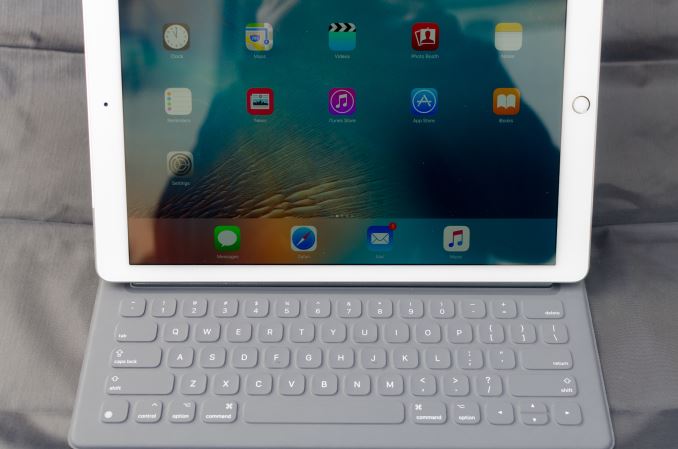
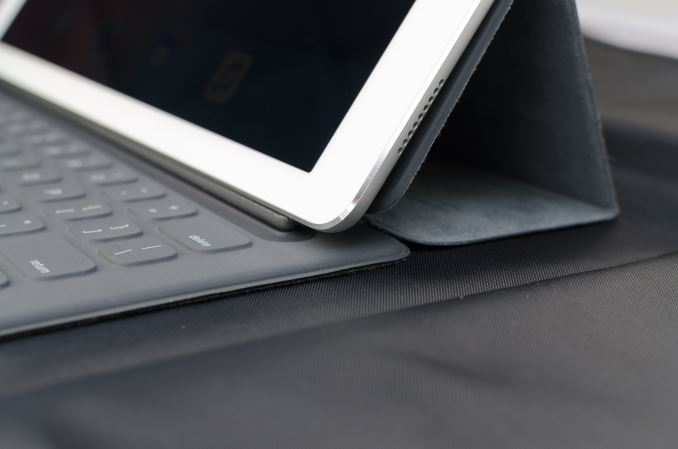

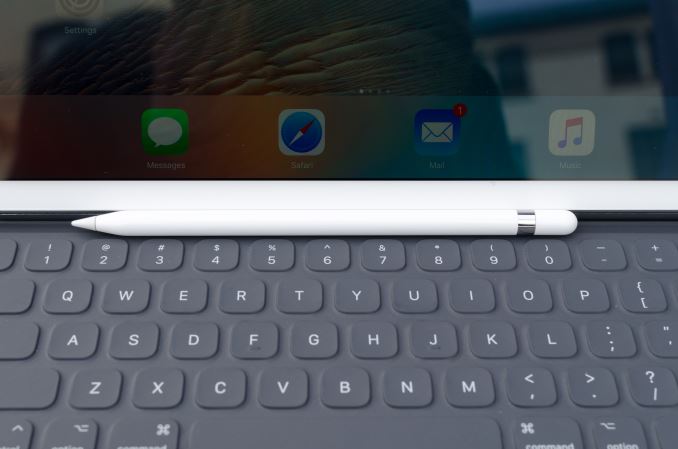
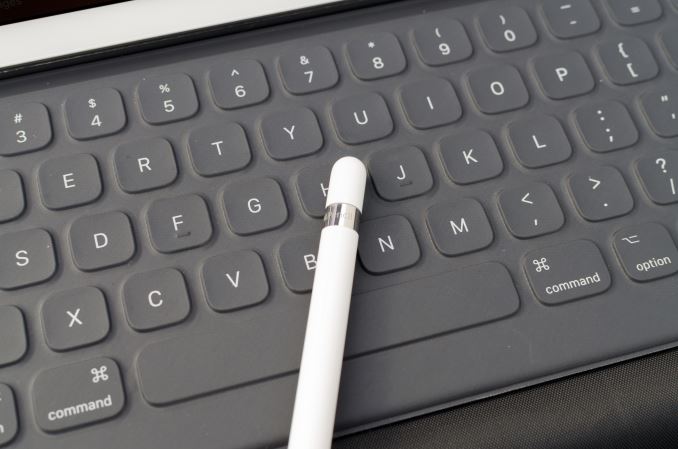

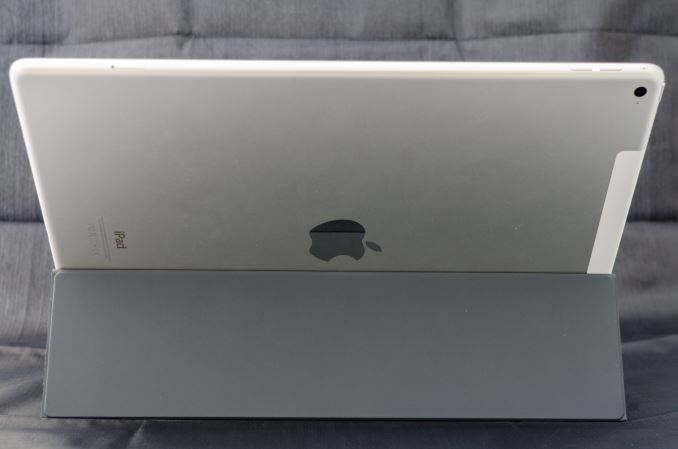
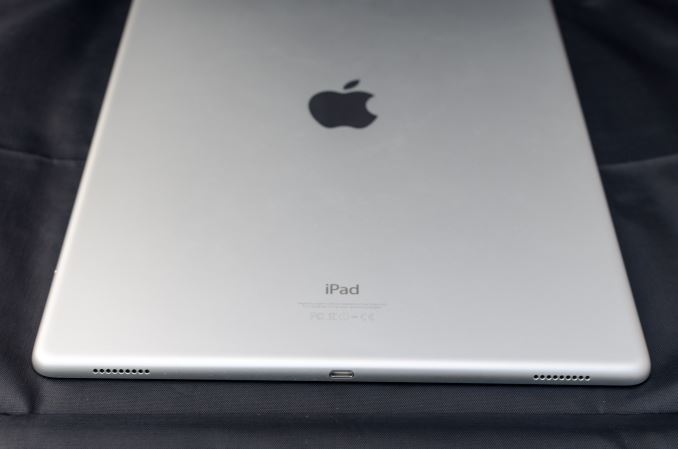
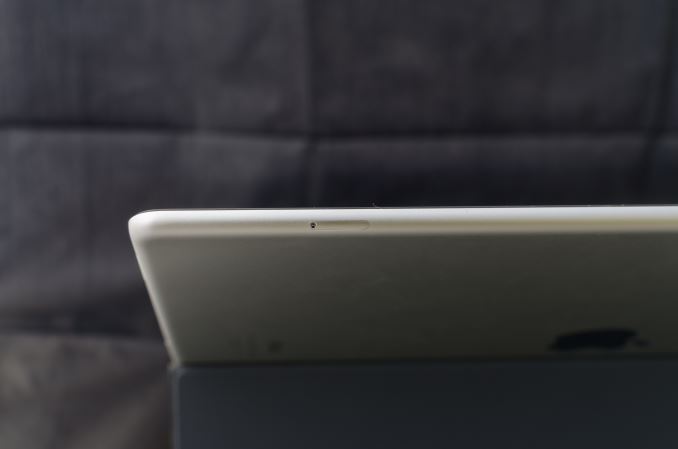
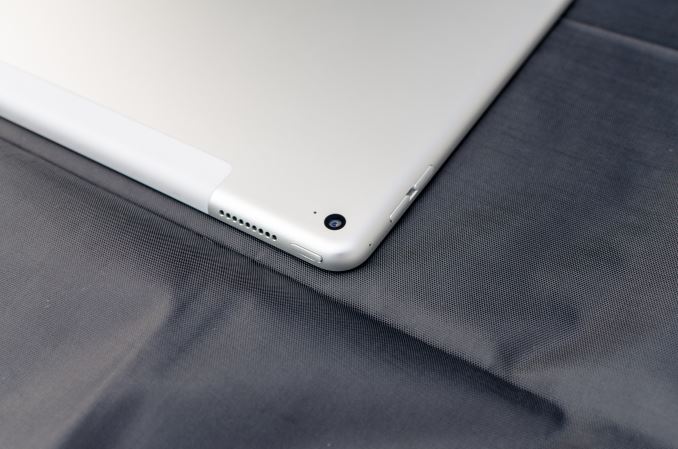
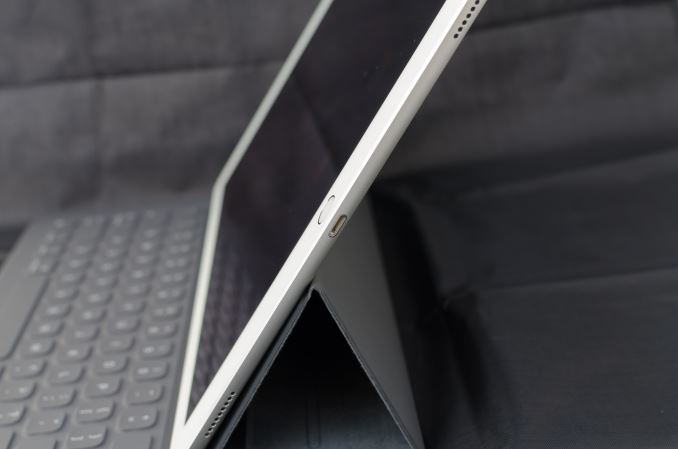








408 Comments
View All Comments
glenn.tx - Saturday, January 23, 2016 - link
I mean't CAN"T be ignored :0MaxIT - Saturday, February 13, 2016 - link
There is absolutely no way I could (or would) use a Surface Pro as my primary laptop (or even tablet)...digiguy - Saturday, January 23, 2016 - link
I don't think anyone is saying that ipad pro is the only game in town. At least not me. As you can see I am a "multi-device" guy. I don't believe in one device for everything. And all my devices and synced via dropbox + onedrive + sugarsync.I have several activities and a lot of what I do is done via a computer. No surface pro/book or other clone could replace my main device, the one I spend most time on and from which I am writing, a 17 inch quad core i7 with 16GB of RAM, 2 SSDs, 1 HHD, lots of ports etc. I am a heavy multi-tasker and 8GB or a dual core are sometimes not enough.
But my quad core stays at home and I also work on the go (teach at university, among other things) and travel, so I have my SP3 for when I work on the go and my 14 inch ultrabook for travelling (better on my lap and on a plane).
So each device has a role and I would never dream of replacing any laptop with the ipad pro... I think very few people buy the ipad pro with this objective. For what I use it for ipad pro beats SP3 on a lot of things (size, sound, weight, touch optimization) and that’s why I bought it.
Constructor - Saturday, January 23, 2016 - link
Yeah, when backward desktop compatibility is the primary thing you need.The whole point of contention her is that some people overgeneralize their own needs to apply to absolutely every professional user, which is simply not the case.
An iPad (Pro or otherwise) can very well be a professional tool, especially when flexibility of use, portability and ease of use are critical, but of course there will still be cases where other computers will be better suited. Just not exclusively any more by a long shot.
Murloc - Sunday, January 24, 2016 - link
you won't find that kind of people (pure office workers who only need the office ecosystem and sync everything to the cloud and have no need for other software or usb ports) commenting on this review.glenn.tx - Saturday, January 23, 2016 - link
"I didn’t really notice that it had gotten significantly harder to handle in the hands than an iPad Air 2"... Are you kidding me? Find me someone else that agrees with this opinion. Every other review of the Pro notes that it's a bit unwieldy. I wish I could find another quality technical source for reviews other than Anandtech because the bias for Apple is gushing.KPOM - Saturday, January 23, 2016 - link
Most sites have said that the weight balance is good.Constructor - Saturday, January 23, 2016 - link
Most people who have handled mine have remarked how light it is relative to what they expected at its size, and that reflects my own impression as well.Of course it's bigger and heavier than an iPad Air 2, but "harder to handle" is something I can't really get together with the actual device. It's just A4-sized like any ordinary paper magazine. If you can't cope with that, you must have major problems anyway.
digiguy - Saturday, January 23, 2016 - link
I would say that the air you can hold it from one side for as long as you like, the ipad pro you'll probably want to hold it like a pizza if for more that a few seconds, but if you hold it like that you can hold it for long without feeling tired. That's not a big issue IMO.Constructor - Saturday, January 23, 2016 - link
Even prolonged sessions playing Real Racing for several hours (where it's held free without support with both hands because it also acts as the steering wheel) have not been a major problem yet.Yes, holding it with one hand at one edge is not ideal, but it's just like a stiff A4 note pad in general. Not a big problem.
One great feature is that the microfiber back side of the Smart Cover sticks very firmly to any kind of fabric, so it's perfectly comfortable to cross my legs and put the iPad on my thigh, without touching it with my hands at all. It just stays there very securely (even on a train) as if glued in place.
Actually much more comfortable than any book or magazine I've ever read while sitting down (which you always have to keep from slipping away and from trying to close by itself).
It is also very useful when typing on my lap with the onscreen keyboard, where it also prevents the iPad from slipping all over the place.
I don't know if that was explicitly a design goal, but it's definitely a great advantage and one of the reasons why I can very much recommend the regular Smart Cover. (The one for my previous iPad 3 had survived four years of regular use with minimal wear already.)